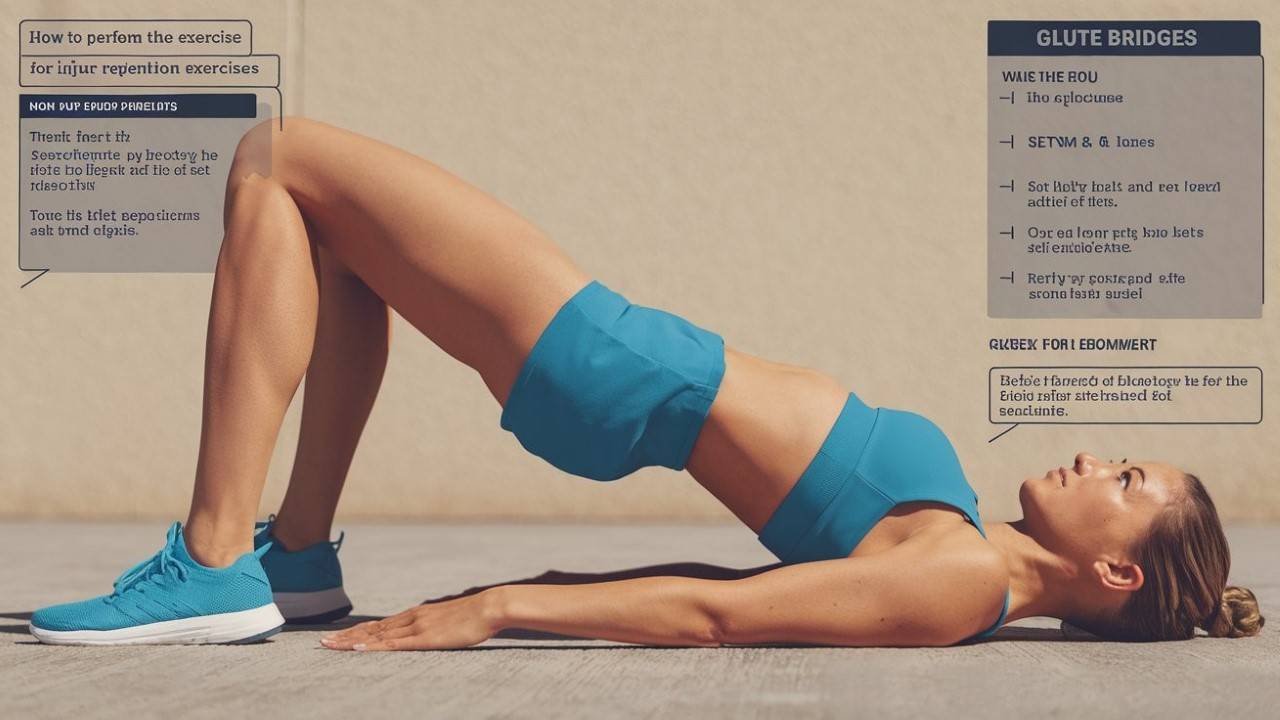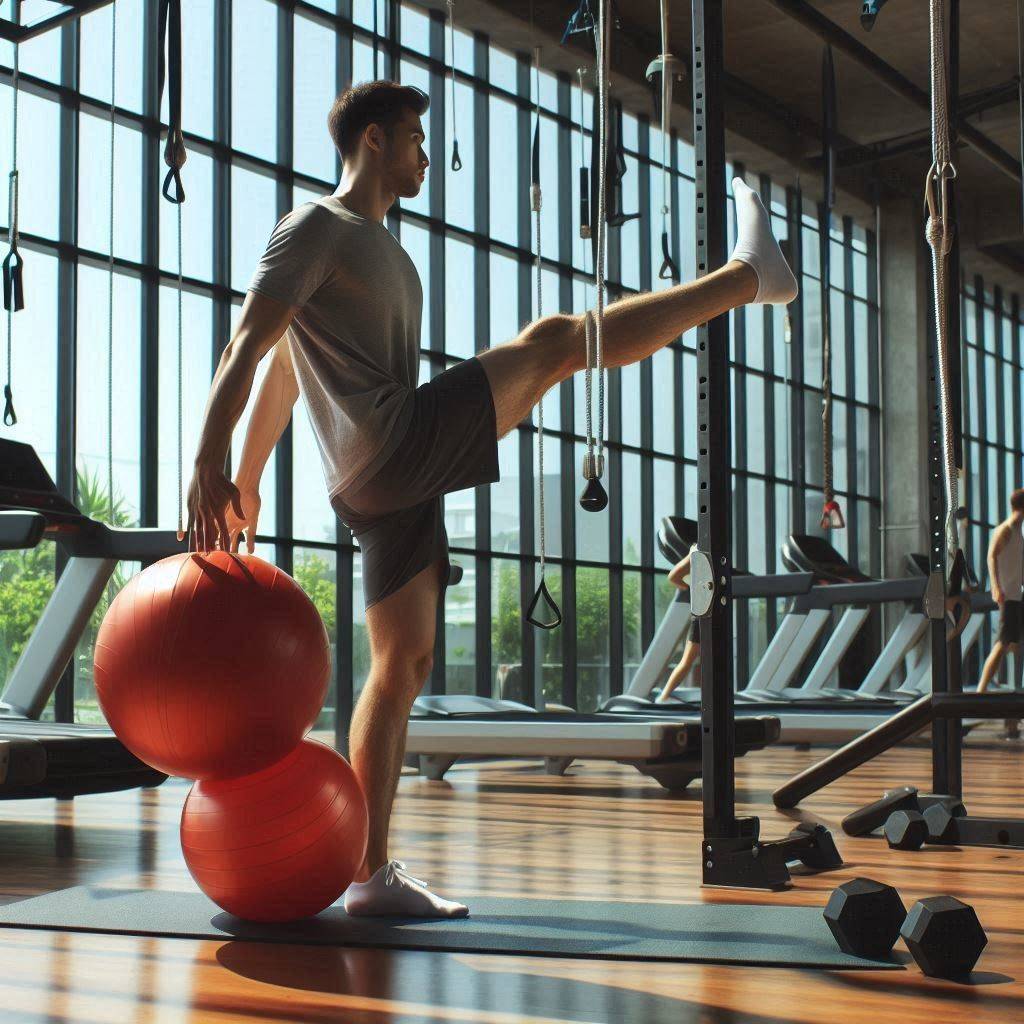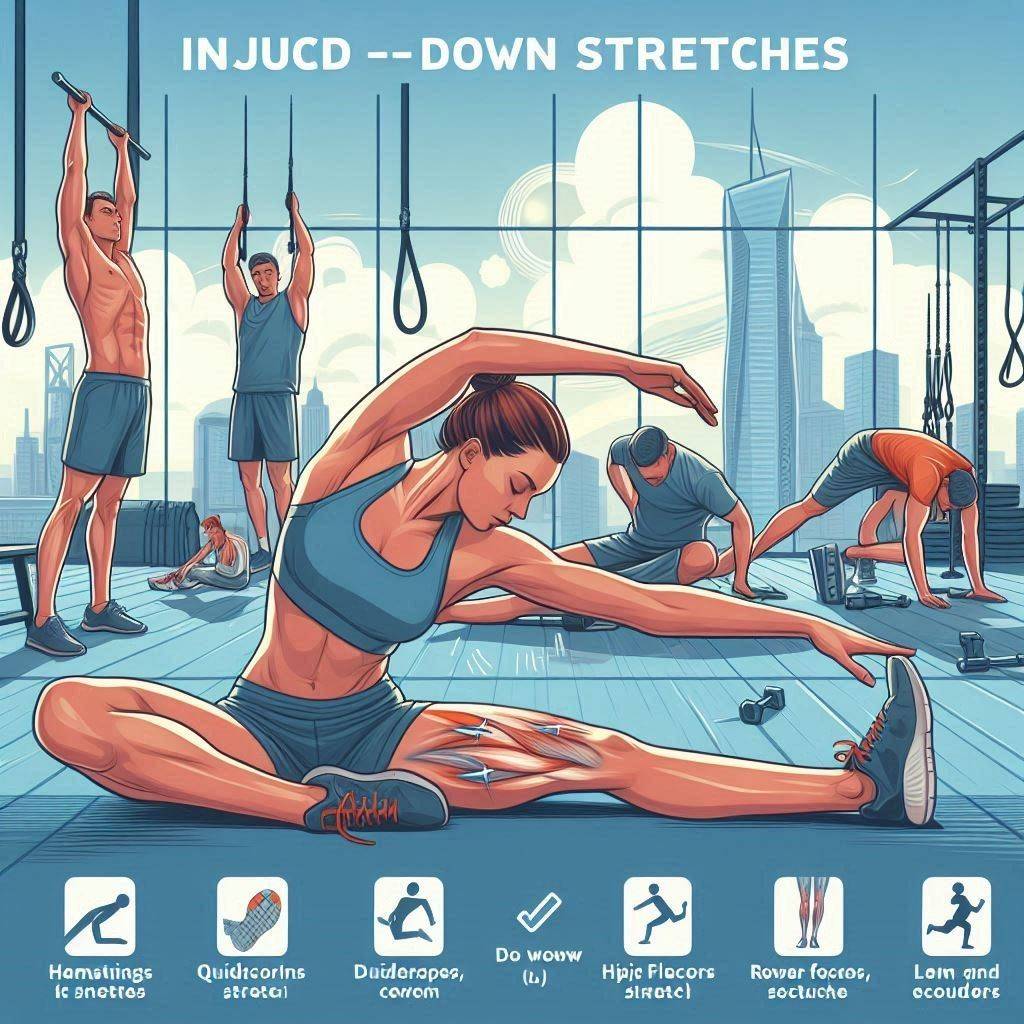Injury Prevention Exercises: 9 Moves to Stay Pain-Free for Life
Discover 9 essential injury prevention exercises to keep your pain-free for life. Learn proper form, and progression tips, and how to integrate them into your routine.
Quick Summary
Injury prevention exercises are crucial for long-term health and fitness. Top 9 moves:
- Dynamic warm-up
- Foam rolling
- Bridges
- Planks
- Single-leg balance
- The shoulder blade squeezes
- Hip hinge
- Calf raises
- Cool-down stretches
Perform 2-3 times weekly, focusing on proper form and gradual progression.
Injury Prevention Exercises: Your Key to Lifelong Fitness
As a physical therapist with over 15 years of experience, I’ve seen firsthand how injury prevention exercises can transform lives. Whether you’re an athlete, a weekend warrior, or simply looking to stay active as you age, these nine moves will help you build a resilient body that can withstand the rigours of daily life and physical activity.
Why Injury Prevention Matters?
Before we dive into the exercises, let’s quickly discuss why injury prevention is so crucial:
- Maintains long-term health and mobility
- Reduces healthcare costs
- Improves performance in sports and daily activities
- Enhances quality of life
- Builds confidence in movement
I’ve worked with countless patients who wished they had prioritized injury prevention earlier. Trust me, it’s much easier (and less painful) to prevent injuries than to recover from them.
The 9 Best Injury Prevention Exercises
Let’s break down each exercise with proper form, variations, and tips from years of clinical experience.
1. Dynamic Warm-up

A proper warm-up is your first line of defence against injuries. Injury prevention exercises should always start with getting your body primed for movement.
How to perform:
- Start with 5-10 minutes of light cardio (e.g., jogging in place, jumping jacks)
- Move through a series of dynamic stretches, including:
- Arm circles (10 forward, 10 backward)
- Leg swings (10 per leg)
- Walking lunges with a twist (10 per side)
- High knees (30 seconds)
- Butt kicks (30 seconds)
My experience: In my clinic, I’ve seen a significant reduction in acute injuries among patients who adopt a consistent dynamic warm-up routine. It improves blood flow, increases range of motion, and mentally prepares you for the activity ahead.
Pro tip: Tailor your warm-up to the activity you’re about to perform. For example, if you’re going for a run, include lower-body movements.
2. Foam Rolling

Foam rolling, or self-myofascial release, is a significant change in the world of injury prevention exercises. It helps release muscle tension, improve flexibility, and enhance recovery.
How to perform:
- Place the foam roller under the muscle group you want to target.
- Slowly roll back and forth, pausing on tight or tender spots.
- Spend 30-60 seconds on each muscle group.
- Focus on major areas like:
- Quadriceps
- IT band
- Hamstrings
- Calves
- Upper back
My experience: I’ve incorporated foam rolling into my patients’ rehab programs for years, and the results are remarkable. Many reports have reduced muscle soreness, improved flexibility, and better overall movement quality.
Pro tip: Don’t rush through foam rolling. Slow, controlled movements are key to reaping the full benefits. Hold pressure on that area for 20-30 seconds if you find a particularly tender spot.
3. Glute Bridges

Glute bridges are essential injury prevention exercises that target the often-neglected posterior chain, particularly the glutes and hamstrings.
How to perform:
- Lie on your back with knees bent and feet flat on the floor, hip-width apart.
- Engage your core and squeeze your glutes to lift your hips off the ground.
- Hold the top position for 2-3 seconds, ensuring your body forms a straight line from knees to shoulders.
- Lower back down slowly and control.
- Perform 3 sets of 12-15 repetitions.
My experience: In my physical therapy practice, I’ve seen glute bridges work wonders for patients with lower back pain and knee issues. Strengthening the glutes helps stabilize the pelvis and takes pressure off the lower back and knees during daily activities and sports.
Pro tip: To increase difficulty, try single-leg bridges or elevate your feet on a low bench. Focus on a slow, controlled movement to maximize muscle engagement.
4. Planks

Planks are powerhouse injury prevention exercises that strengthen your entire core, including the deep stabilizing muscles of your spine.
How to perform:
- Start in a push-up position, with forearms on the ground and elbows under your shoulders.
- Engage your core, glutes, and quads to create a straight line from your head to your heels.
- Hold this position, focusing on breathing steadily and maintaining proper form.
- Aim for 3 sets of 30-60 second holds, or as long as you can maintain good form.
My experience: I’ve incorporated planks into nearly every patient’s rehab program. They’re incredibly effective at building core stability, which is crucial for preventing back injuries and improving overall movement quality.
Pro tip: Quality over quantity is key with planks. It’s better to hold a perfect plank for 20 seconds than a sloppy one for a minute. As you build strength, try variations like side planks or planks to reach for an extra challenge.
5. Single-Leg Balance

Single-leg balance exercises are crucial injury prevention exercises, especially for ankle, knee, and hip stability.
How to perform:
- Stand on one leg with your knee slightly bent.
- Engage your core and glutes to maintain balance.
- Hold for 30 seconds, then switch legs.
- Perform 3 sets on each leg.
- Progress by closing your eyes or standing on an unstable surface like a foam pad.
My experience: I’ve seen remarkable improvements in patients’ proprioception and overall stability after incorporating regular balance training. This exercise is particularly beneficial for athletes in sports with quick direction changes, like basketball or soccer.
Pro tip: Make this exercise functional by mimicking movements from your sport or daily life while balancing. For example, a tennis player might practice their serving motion while balancing on one leg.
6. Shoulder Blade Squeezes

Shoulder blade squeezes, or scapular retractions, are simple yet effective injury prevention exercises for upper body posture and shoulder health.
How to perform:
- Sit or stand with your arms at your sides.
- Squeeze your shoulder blades together, as if holding a pencil between them.
- Hold for 5 seconds, then release.
- Perform 3 sets of 12-15 repetitions.
My experience: These exercises have been game-changers for my patients with desk jobs or those involved in overhead sports. They help counteract the rounded shoulder posture that often leads to neck and shoulder pain.
Pro tip: Incorporate these into your daily routine by doing a set every hour during your workday. You can easily perform them discreetly at your desk.
7. Hip Hinge

The hip hinge is a fundamental movement pattern crucial for injury prevention exercises, particularly for protecting your lower back during lifting activities.
How to perform:
- Stand with feet hip-width apart.
- Keeping your back straight and core engaged, bend your hips, pushing them back as if trying to touch a wall behind you with your buttocks.
- Allow a slight bend in your knees but focus on the hip movement.
- Lower your torso until you feel a stretch in your hamstrings, then return to the starting position.
- Perform 3 sets of 12-15 repetitions.
My experience: Teaching proper hip hinge technique has significantly reduced the incidence of back injuries among my patients, especially those who frequently lift objects at work or in their daily lives.
Pro tip: Practice with a broomstick or light rod held along your spine to ensure you’re maintaining a neutral back position throughout the movement.
8. Calf Raises
Calf raises are simple yet effective injury prevention exercises that strengthen the lower leg muscles, crucial for ankle stability and overall lower body health.
How to perform:
- Stand with feet hip-width apart, near a wall or chair for balance if needed.
- Rise onto your toes, lifting your heels off the ground.
- Hold the top position for a moment, then slowly lower back down.
- Perform 3 sets of 15-20 repetitions.
- Progress to single-leg calf raises as you build strength.
My experience: I’ve found calf raises particularly beneficial for runners and athletes in jumping sports. They help prevent common issues like Achilles tendinitis and plantar fasciitis.
Pro tip: To target different parts of the calf muscle, try performing these with toes pointed straight ahead, slightly inward, and slightly outward.
9. Cool-Down Stretches

Proper cool-down stretches are crucial injury prevention exercises that help improve flexibility, reduce muscle soreness, and promote recovery.
How to perform:
- After your workout, take 5-10 minutes to stretch all major muscle groups.
- Hold each stretch for 30-60 seconds.
- Focus on breathing deeply and relaxing into each stretch.
- Key areas to target include:
- Hamstrings
- Quadriceps
- Calves
- Hip flexors
- Chest and shoulders
- Lower back
My experience: Patients who consistently incorporate a proper cool-down routine report less muscle soreness, improved flexibility, and a reduced risk of future injuries.
Pro tip: Use this time to practice mindfulness or deep breathing exercises. It’s a successful opportunity to check in with your body and identify any areas of tension or potential issues.
Now that we’ve covered all 9 injury prevention exercises, let’s move on to putting together an effective routine and addressing common questions about injury prevention.
Putting It All Together: Your Injury Prevention Routine
Now that we’ve covered all 9 injury prevention exercises, let’s create a routine to incorporate them into your weekly schedule.
Sample Weekly Routine:
- Monday & Thursday: Full routine (all 9 exercises)
- Tuesday & Friday: Dynamic warm-up before your regular workout
- Wednesday & Saturday: foam rolling, and cool-down stretches
- Sunday: Active recovery (light walk or yoga)
Remember, consistency is key with injury prevention exercises. Aim to perform the full routine at least twice a week and incorporate elements of it (like the warm-up and cool-down) into all your workouts.
Common Mistakes to Avoid
In my years as a physical therapist, I’ve seen people make some common mistakes for injury prevention. Here are a few to watch out for:
- Skipping the warm-up
- Rushing through exercises
- Ignoring proper form
- Progressing too quickly
- Neglecting rest and recovery
Frequently Asked Questions: Injury Prevention Exercises
What is the best injury prevention?
The best injury prevention strategy is a comprehensive approach that includes regular injury prevention exercises, proper warm-up and cool-down routines, nutrition, adequate rest, and gradual progression in your activities. Consistency in these practices is key to long-term injury prevention.
What are the 4 steps of injury prevention?
The four primary steps of injury prevention are:
- Education and awareness about potential risks
- Proper training and conditioning, including injury prevention exercises
- Use of appropriate equipment and safety measures
- Regular monitoring and adjustment of your prevention strategies
What activities reduce the risk of injuries?
Activities that reduce injury risk include:
- Regular stretching and mobility work
- Strength training, especially focusing on core and stabilizing muscles
- Balance and proprioception exercises
- Low-impact cardiovascular exercise
- Proper warm-up and cool-down routines
What are the 6 general rules for injury prevention?
The six general rules for injury prevention are:
- Always warm up before physical activity
- Use proper technique and form in all exercises
- Gradually increase the intensity and duration of activities
- Listen to your body and respect pain signals
- Use appropriate equipment and safety gear
- Allow adequate time for rest and recovery
Conclusion
Incorporating these 9 injury prevention exercises into your routine can significantly reduce your risk of injury and improve your overall quality of life. Remember, consistency is key, and it’s never too late to start prioritizing your body’s long-term health.
Thank you for reading this comprehensive guide to injury prevention. Your future self will thank you for taking these proactive steps toward a pain-free, active life.
Recommended Reading




